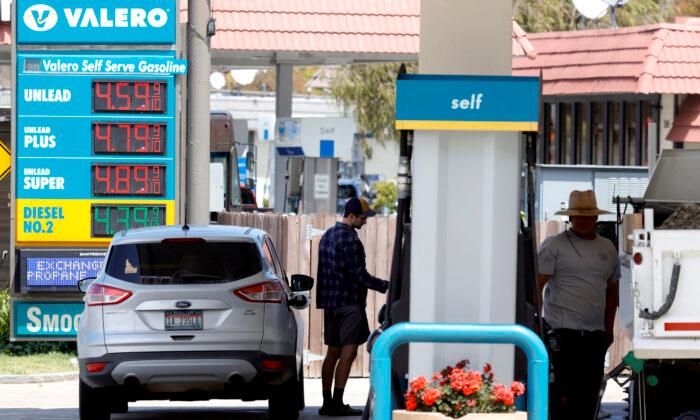The U.S. price of regular-grade gasoline is continuing to rise, with the national average hitting a seven-year high.
“With the U.S. economy slowly recovering from the depths of the pandemic, demand for gas is robust, but the supply is tight,” AAA spokesman Andrew Gross said in a statement. “We haven’t seen prices this high since September of 2014.”
The nation’s top five most expensive markets were, as of Oct. 27: California ($4.56), Hawaii ($4.29), Nevada ($3.93), Washington ($3.87), and Oregon ($3.78).
San Francisco gasoline prices, which according to AAA on Oct. 26 averaged $4.73 for a gallon of regular unleaded, appear poised to hit an all-time record.
“It will be the first city to set a new record high for #gasprices since 2012,” De Haan predicted.
The Biden administration’s chief plan to ease surging high gasoline prices was to persuade OPEC-plus to agree to boost production more sharply to reduce the supply crunch, but, so far, that plan has failed.
Meanwhile, oil prices fell by around 1 percent on Oct. 27 after industry data showed crude oil stockpiles rose more than expected and fuel inventories unexpectedly increased last week in the United States.
At the same time, the EIA expects WTI crude oil prices to average $68.24 per barrel in 2022, down only slightly from $68.48 in 2021 and far higher than the $39.17 in 2020 and $56.99 in 2019.
Brent crude prices are forecast to rise to an average of $71.91 per barrel in 2022 from $71.38 this year, up from $41.69 in 2020 and $64.34 in 2019.






Friends Read Free